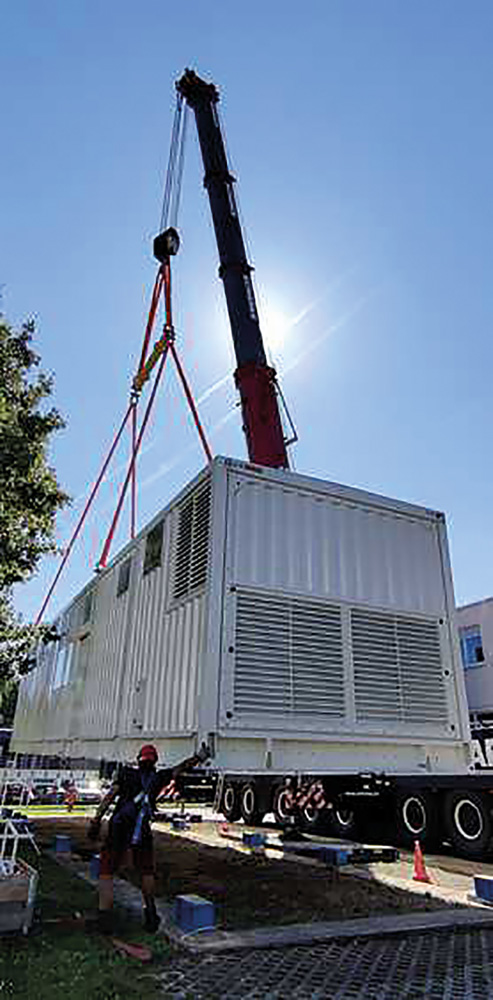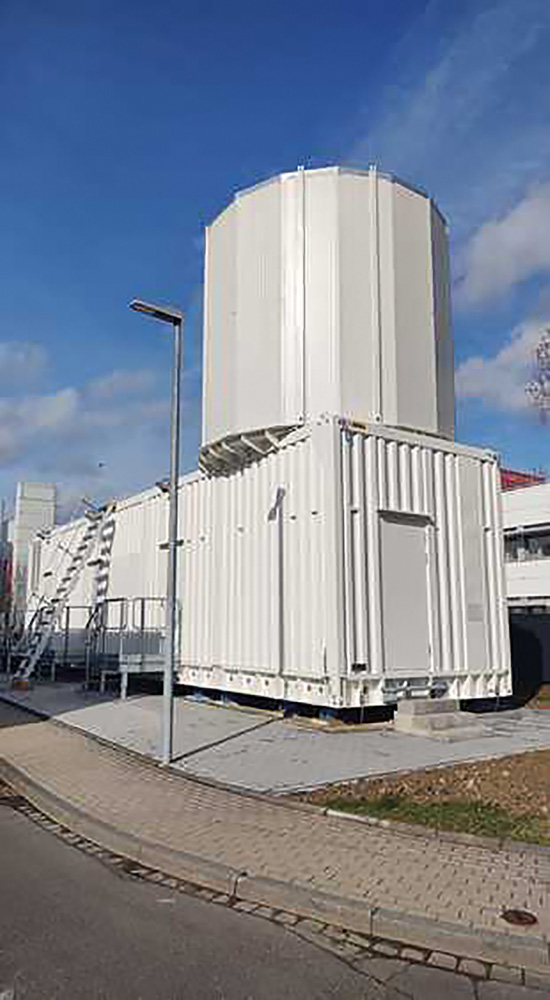Systematic observation of sections of the sky



GESTRA‘s view reaches far: the space radar tracks objects moving through low Earth orbit – whether they are satellites or space debris.
The resolution is expected to increase even further with the addition of a second receiver. Space debris can become a dangerous projectile, damaging or even destroying satellites in space. The partially mobile space surveillance radar GESTRA – short for »German Experimental Space Surveillance and Tracking Radar« – aims to address this by observing and cataloging objects in space. If a collision is imminent, the satellite can perform an evasive maneuver. GESTRA was developed by Fraunhofer FHR on behalf of the German Space Agency at DLR for the joint space situational awareness center of DLR and the German Armed Forces.
Operational Capability Demonstration
In December 2023, the radar system showcased its capabilities: During a functional demonstration, the staff of the Space Situational Awareness Center tested all search and tracking modes – essentially all radar functionalities – bringing the system very close to its planned operational deployment. Previously, GESTRA could only scan in a conical shape in one direction and detect passing objects three times. Now, it systematically observed celestial sections of 40, 60, or even 90 degrees. To cover such a large sky area, the radar had to frequently adjust its field of view. With success: GESTRA continuously and successfully detected all objects passing through this corridor. It could track individual objects for several minutes, performing 50 to 60 detections sequentially.
Higher Resolution with GESTRA EUSST
In the GESTRA-EUSST project, the radar‘s resolution is set to increase significantly: Researchers are connecting GESTRA with an additional receiving unit. The 18 x 4.1 x 4 m container, manufactured in Austria and already partially integrated with climate control, power, and fire detection technology, was delivered to Fraunhofer FHR in September 2023. Since then, the integration process has been ongoing at the Wachtberg site, where the system is being expanded with radar components developed by Fraunhofer FHR. The relevant radar components are currently undergoing qualification and acceptance tests. The GESTRA-EUSST system is expected to be fully operational by 2025, with the first joint operation with the GESTRA system planned.
The »GESTRA Networking« project focuses on the integration of GESTRA-EUSST and GESTRA. A major emphasis of the project is software development and algorithm design. Particularly challenging is the synchronization of the cooperating radars. To align the radars, both systems are equipped with synchronized clocks: the time discrepancies that accumulated over the months have been reduced to just a few nanoseconds through extensive development! The algorithms being developed are not only suitable for GESTRA-EUSST but are also designed to allow integration of GESTRA-TX2 and other transmitting and receiving units.
A Calibration Campaign Planned for 2024
The European Union uses data generated by various radars to create an orbital catalog of objects in near-Earth space through the EUSST database, short for »EU Space Surveillance and Tracking.« However, not all radars are allowed to input their data directly; they must first demonstrate that they meet certain quality standards. For GESTRA, a calibration campaign planned for early 2024 will generate the necessary data to meet these requirements. This hurdle is expected to be easily overcome by GESTRA, as all previous measurements have achieved very good results.

